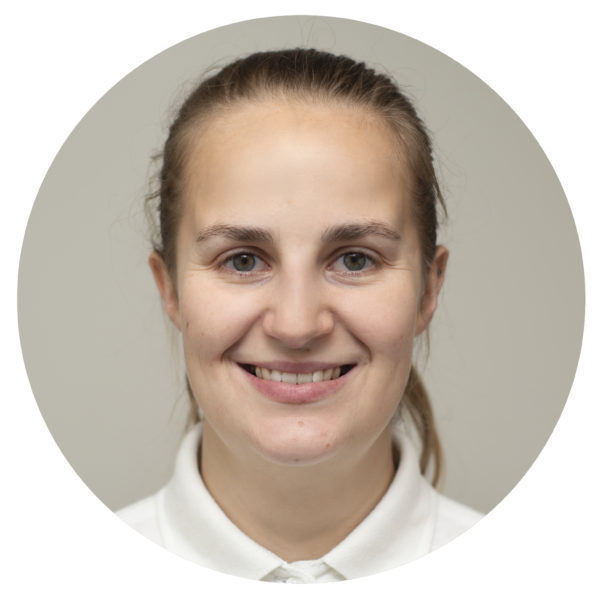
Frozen Shoulder (Adhesive Capsulitis)
Adhesive capsulitis, commonly dubbed a stiff or “frozen shoulder,” is prevalent in roughly 8.2 percent of men and 10.1 percent of women across the population, according to a large UK-based primary care research. It is more common in women than in males, and it is most commonly diagnosed in adults over the age of 45. It is anticipated that 20 percent to 30 percent of patients who have adhesive capsulitis in one shoulder may develop it in the other. Physiotherapists assist persons with adhesive capsulitis in reducing discomfort and stiffness, as well as restoring shoulder movement in the safest and most effective manner possible.
What is Frozen Shoulder (Adhesive Capsulitis)?
Adhesive capsulitis is a scar tissue-induced stiffness of the shoulder that causes pain and loss of motion. The exact cause of adhesive capsulitis is a point of contention. Some believe inflammation, such as when the lining of a joint becomes inflamed (synovitis), or autoimmune reactions, in which the body launches a “attack” against its own chemicals and tissues, are to blame. Other factors to consider are:
- After an injury or surgery, the body’s reactions.
- Other conditions that have caused a person to stop moving their shoulder, such as arthritis, a rotator cuff tear, bursitis, or tendinitis.
- After surgery or a fracture, immobilisation of the arm, such as in a sling.
Adhesive capsulitis, on the other hand, frequently occurs for no apparent reason.
Symptoms
Adhesive capsulitis causes pain to worsen and mobility loss in the majority of persons. There are four stages of adhesive capsulitis, and your physiotherapist can help you figure out which one you’re in.
Stage 1: “Pre-freezing”
It may be difficult to recognise your problem as adhesive capsulitis in the early stages of its growth. You’ve been experiencing symptoms for one to three months and they’re growing worse. Shoulder movement produces discomfort. It normally hurts while you’re not using it, but as you move around, the discomfort intensifies and becomes “sharp.” During this time, you’ll begin to minimise shoulder motion and protect the shoulder by using it less. The loss of mobility is most obvious in “external rotation” (when your arm is rotated out from your body), but it can also occur when you elevate your arm or reach behind your back. This stage is characterised by pain, which can occur both during the day and at night.
Stage 2: “Freezing”
You’ve probably been experiencing symptoms for 3 to 9 months, with a gradual loss of shoulder movement and an increase in pain (especially at night). Although the shoulder still has some range of motion, it is restricted by discomfort and stiffness.
Stage 3: “Frozen”
Your symptoms have been bothering you for 9 to 14 months, and you have a limited range of motion in your shoulders. There is still a significant degree of pain in the early stages of this cycle. However, as you get closer to the end of this stage, the pain will lessen, and you’ll only feel it when you move your shoulder as far as you can.
Stage 4: “Thawing”
You’ve been experiencing problems for 12 to 15 months and have noticed a significant reduction in discomfort, particularly at night. Although you still have a restricted range of motion, your ability to execute daily activities that require overhead mobility is rapidly increasing.
Injection Therapy For Frozen Shoulder
Injection therapy may be required if the pain persists and is interfering with your daily activities. Injection treatment is especially beneficial in the following circumstances:
- An ultrasound-guided steroid injection is the way to go if you’re in a lot of pain, especially if it’s waking you up numerous times a night. This claim is supported by medical research.
- Pain that keeps you from doing things like washing and dressing, cooking, or participating in recreational activities.
- Pain is interfering with your motivation to participate in physiotherapy rehabilitation.
- Hydrodilatation (Hydrodistenion of shoulder capsule): This procedure is performed under ultrasound guidance when shoulder is stiff but less painful. This procedure helps to stretch the capsule with high volume of steroid, lidocaine and saline.
According to a recent systematic analysis, steroid injections are the most effective treatment for frozen shoulder in stage one, the “painful stage” (Wang et al., 2016). Patients are having a terrible time finding pain relief at this point, and even tiny movements make the pain worse. It can take several hours or even days for discomfort to decrease when it becomes severe. Injections are used to reduce the pain and edoema associated with frozen shoulder. This provides you with a ‘great opportunity’ to correctly stretch your shoulder. For the best effects, physiotherapy should be started within two weeks of receiving a shoulder joint injection, according to studies.
Injections guided by ultrasound images are more successful at delivering medication to the shoulder joint, as well as reducing discomfort and improving function, than injections guided by landmarks (Daniels et al., 2018; Aly et al., 2015). According to study, ultrasound-guided injections can dramatically relieve the pain associated with frozen shoulder, especially in the short term. When injectable treatment and physiotherapy are combined, the results can be quite effective.
How Is It Diagnosed?
Physiotherapists frequently don’t see patients with adhesive capsulitis until the freezing phase or early in the freezing phase. When a physiotherapist observes the signs and symptoms of adhesive capsulitis, it may be because they are being treated for another shoulder disease. To rule out other conditions, your physiotherapist will do a thorough examination that includes a detailed health history. Your physiotherapist will search for a “capsular pattern” in your limited range of motion, which is common in adhesive capsulitis patients. In addition, your physiotherapist will investigate additional illnesses that are linked to adhesive capsulitis, such as diabetes, thyroid disorders, and autoimmune disorders.
How Can a Physiotherapist Help?
The overall goal of your physiotherapist is to recover your movement so that you can continue about your everyday activities. Your physiotherapist will build a personalised workout programme adapted to your specific needs after the examination process has determined the stage of your disease. For individuals in stage 2 or higher, exercise has been found to be the most helpful. Your treatment may involve the following:
Stages 1 and 2
Exercises and manual therapy:
Your physiotherapist will assist you in maintaining as much range of motion as possible while also assisting you in reducing pain. To keep shoulder movement, your therapist may employ a combination of range-of-motion exercises and manual therapy (hands-on) treatments.
Modalities:
Prior to further forms of treatment, your physiotherapist may employ heat and ice treatments (modalities) to help relax the muscles.
Home-exercise program:
Your physiotherapist will prescribe a mild home-exercise programme to help you regain mobility. Your therapist will warn you that stretching too aggressively at this time may aggravate your shoulder ache.
Your physiotherapist will tailor your therapy activities and intensity to your specific symptoms, as well as teach you how to utilise the affected arm properly. Your therapist will keep a close eye on your progress to ensure a safe healing process.
Pain medication:
Adhesive capsulitis discomfort can sometimes be unbearable despite conservative treatment. In that instance, your physiotherapist may recommend an injection of a pain-relieving and anti-inflammatory medicine. Although these injections do not provide long-term advantages for range of motion or reduce the length of the ailment, research has shown that they do provide short-term pain relief.
Stage 3
During phase 3, the focus of treatment is on restoring motion. The following treatments may be used:
Stretching techniques:
To encourage more movement and flexibility, your physiotherapist may use more intensive stretching techniques.
Manual therapy:
Your physiotherapist may increase the intensity of your manual therapy, urging the muscles and tissues to relax up.
Strengthening exercises:
You can start strengthening workouts that target your shoulder and core muscles. These workouts will be added to your home-exercise routine.
Stage 4
Your physiotherapist will focus on the return of “normal” shoulder body mechanics and your return to regular, pain-free activities in the final stage. Your treatment may involve the following:
Stretching techniques:
This stage’s stretching techniques will be similar to those you’ve already learned, but they’ll focus on the precise directions and postures that are restricted for you.
Manual therapy:
Manual treatment techniques may be used by your physiotherapist in very precise positions and ranges that are difficult for you. They’ll concentrate on removing the remaining of your constraints.
Strength training:
Your physiotherapist will prescribe particular strengthening exercises to help you perform job or recreational tasks that are connected to any weaknesses you may have.
Return to work or sport:
Our physiotherapist will work with you on the motions and tasks that you need in your everyday and recreational lives.
Can this Injury or Condition be Prevented?
Adhesive capsulitis has no known cause. So far, no proven preventative strategy exists. The ailment normally develops gradually and must “run its course.” The sooner you contact your physical therapist, the sooner you’ll get advice on how to best manage your symptoms.
Book your appointment today – call 0118 934 4055 CONTACT US











